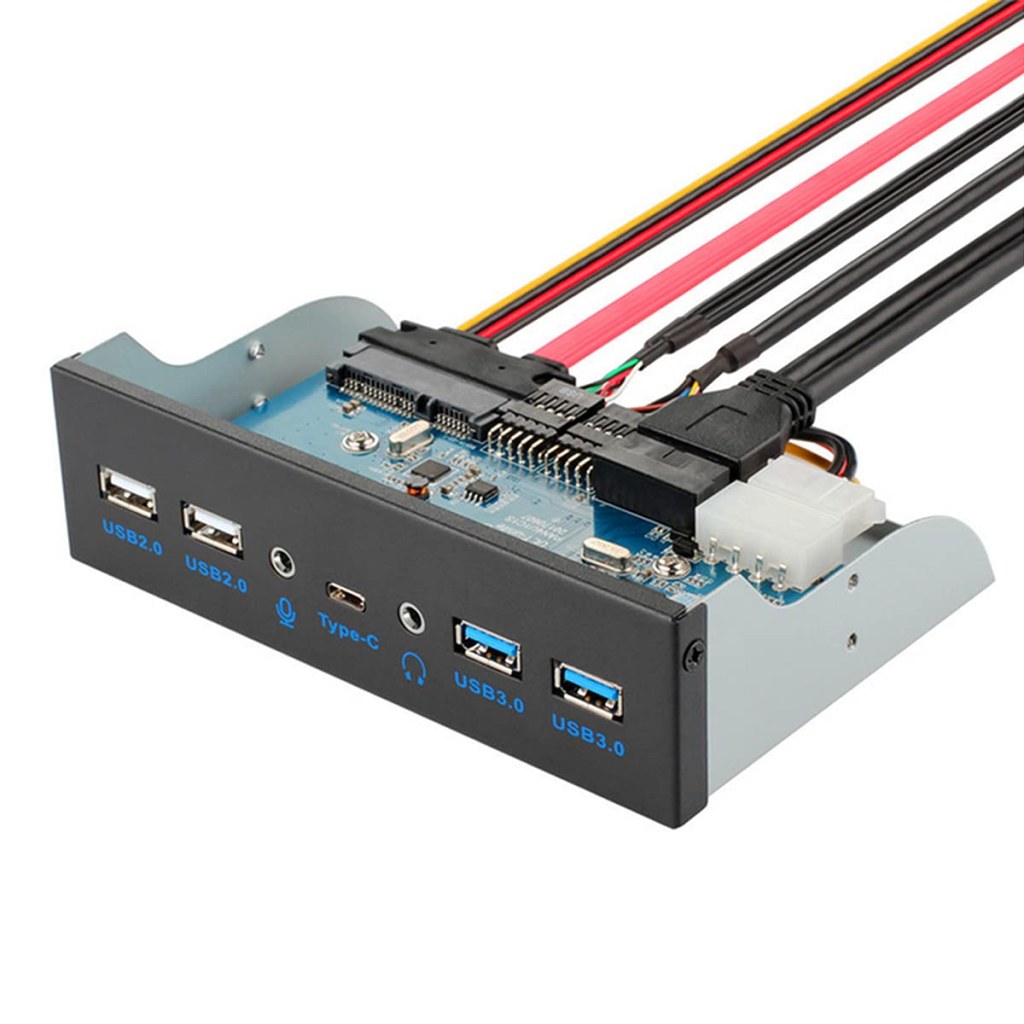Upgrade Your Experience With Cutting-Edge Computer Parts 3.0 USB – Unleash The Power And Click To Action!
Computer Parts 3.0 USB: Enhancing Speed and Efficiency
Introduction
Hello Readers,
1 Picture Gallery: Upgrade Your Experience With Cutting-Edge Computer Parts 3.0 USB – Unleash The Power And Click To Action!

Welcome to our comprehensive guide on computer parts 3.0 USB, a technology that has revolutionized the way we transfer data. In this article, we will explore the ins and outs of this cutting-edge innovation, its benefits, and its impact on everyday computer usage. So, let’s dive in and discover how computer parts 3.0 USB can enhance your computing experience.
What is Computer Parts 3.0 USB?

Image Source: media-amazon.com
🔍 Computer parts 3.0 USB, also known as USB 3.0, is the latest iteration of the Universal Serial Bus (USB) technology. It is designed to provide faster data transfer rates, higher power output, and improved performance compared to its predecessors, USB 2.0 and USB 1.1.
🔋 With USB 3.0, you can enjoy lightning-fast transfer speeds of up to 5 gigabits per second (Gbps), which is ten times faster than USB 2.0. This means you can transfer large files, such as HD videos or high-resolution images, in a matter of seconds.
🚀 Additionally, USB 3.0 offers enhanced power delivery, allowing you to charge your devices faster and more efficiently. This is particularly useful when charging power-hungry devices like smartphones or tablets.
💡 To take full advantage of USB 3.0, you need compatible computer parts such as motherboards, expansion cards, and peripheral devices that support this technology.
Who Can Benefit from USB 3.0?
🖥️ USB 3.0 is a game-changer for anyone who deals with large files or data-intensive tasks on a regular basis. It caters to a wide range of users, including professionals who work with multimedia content, gamers who require fast loading times, and individuals who want to experience smoother overall computing performance.
🎬 Photographers, videographers, and content creators will appreciate the blazing-fast transfer speeds of USB 3.0 when transferring files between their cameras, external hard drives, and computers. This means less time waiting and more time being productive.
🎮 Gamers can also reap the benefits of USB 3.0, as it reduces loading times and enhances gameplay by providing faster access to game data stored on external drives or USB flash drives.
💼 Even everyday users who frequently transfer files between devices or need to charge their devices quickly will find USB 3.0 highly convenient and time-saving.
When was USB 3.0 Introduced?
📅 The USB 3.0 specification was first introduced in November 2008 by the USB Implementers Forum (USB-IF), a non-profit organization that promotes USB technology. The first consumer devices supporting USB 3.0 hit the market in late 2010 and have since become increasingly prevalent.
⏳ Since then, USB 3.0 has become the standard for many computer peripherals, including external hard drives, flash drives, docking stations, and more.
Where Can You Find USB 3.0 Ports?
🔌 USB 3.0 ports can be found on a variety of devices, including desktop computers, laptops, and even mobile devices like smartphones and tablets. These ports are typically identified by their blue color, allowing for easy differentiation from USB 2.0 ports, which are usually black or white.
💻 When purchasing a new computer or peripheral device, it is important to check whether it supports USB 3.0. This will ensure that you can take full advantage of the enhanced speeds and power delivery offered by this technology.
Why Should You Upgrade to USB 3.0?
💪 The benefits of upgrading to USB 3.0 are undeniable. Whether you’re a professional, a gamer, or an everyday user, this technology can significantly improve your computing experience.
📁 USB 3.0’s faster data transfer speeds allow for quicker backups, seamless file transfers, and more efficient workflows. You no longer have to endure long wait times when moving large files or syncing your devices.
🔋 The enhanced power delivery of USB 3.0 ensures that your devices charge faster, saving you valuable time and keeping you productive throughout the day.
💡 Additionally, USB 3.0 is backward compatible with USB 2.0 and USB 1.1 devices, meaning you can still use your older peripherals with a USB 3.0 port. However, keep in mind that you will not experience the full benefits of USB 3.0 when using older devices.
How Does USB 3.0 Work?
🔧 USB 3.0 achieves its faster speeds by using additional wires and improved data encoding techniques compared to its predecessors.
🔗 It introduces a new transfer mode called SuperSpeed, which utilizes two additional data pairs to transmit and receive data simultaneously. This allows USB 3.0 to achieve its impressive data transfer rates and enhance overall performance.
🔌 USB 3.0 also features improved power management, allowing devices to draw more power when needed and conserve power when idle. This not only enables faster charging but also contributes to energy efficiency.
Advantages and Disadvantages of USB 3.0
Advantages:
⚡ Faster transfer speeds of up to 5 Gbps
🔋 Enhanced power delivery for faster charging
🔌 Backward compatibility with USB 2.0 and USB 1.1 devices
💼 Improved performance and productivity
🖥️ Suitable for a wide range of users, including professionals and gamers
Disadvantages:
🔌 USB 3.0 ports may not be available on older devices
⚠️ Upgrading to USB 3.0 may require purchasing new hardware
Frequently Asked Questions (FAQs)
1. Is USB 3.0 compatible with USB-C?
Yes, USB 3.0 is compatible with USB-C. USB-C is a connector type that can support various USB technologies, including USB 3.0.
2. Can I use a USB 3.0 device with a USB 2.0 port?
Yes, USB 3.0 devices are backward compatible with USB 2.0 ports. However, the transfer speeds will be limited to USB 2.0 speeds.
3. What is the maximum cable length for USB 3.0?
The maximum recommended cable length for USB 3.0 is 3 meters (9.8 feet). Beyond this length, signal degradation may occur.
4. Can I connect a USB 3.0 device to a USB 3.1 port?
Yes, USB 3.0 devices are compatible with USB 3.1 ports. USB 3.1 is an updated version of USB that offers faster transfer speeds and improved power delivery.
5. Are all USB 3.0 ports blue?
No, not all USB 3.0 ports are blue. While blue is the standard color for USB 3.0 ports, some manufacturers may use different colors for their ports.
Conclusion
In conclusion, computer parts 3.0 USB, or USB 3.0, is a groundbreaking technology that enhances speed and efficiency in data transfer. Its faster transfer speeds, enhanced power delivery, and compatibility with existing devices make it a must-have for professionals, gamers, and everyday users alike. By upgrading to USB 3.0, you can streamline your workflows, reduce waiting times, and improve overall productivity. So, why wait? Embrace the power of USB 3.0 and experience computing like never before!
Final Remarks
Disclaimer: The information presented in this article is for informational purposes only. While we strive to provide accurate and up-to-date information, we make no representations or warranties of any kind, express or implied, about the completeness, accuracy, reliability, suitability, or availability with respect to the article or the information, products, services, or related graphics contained in the article for any purpose. Any reliance you place on such information is therefore strictly at your own risk.
Thank you for reading! We hope this article has shed light on the world of computer parts 3.0 USB and its advantages. If you have any further questions or feedback, feel free to leave a comment below. Stay connected for more informative articles!
This post topic: Computer Hardware


